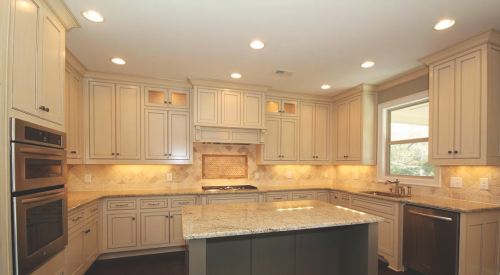You can change anything you want, so long as it’s something we do. In a nutshell, that’s the approach most large production builders seem to take with buyers’ requests to change something about their new homes. Most of housing’s Giants still prefer offering selection rather than customization. But a significant minority will make any change buyers request, as long as they start from a standard floor plan. Only a small fraction of production builders say they will work from a buyer’s own plans.
This and other perspectives on managing processes are described by chief executive officers participating in Reference Point, our periodic survey of management practices in home building. This year’s joint study, by Service & Administrative Institute and Greene, Hollister Inc., was conducted among a select group of 56 of the largest 400 building companies, as ranked in this magazine’s 1998 Report on Housing’s Giants. Survey Results
When we asked survey respondents to describe their company’s most accommodating approach to customization requests, a solid majority (54%) of these senior executives said their normal practice is to limit buyers’ choices to color and finish selections, plus choices from a predetermined and pre-priced list of alterations, additions and options. But another 31% said they normally allow buyers to specify any changes they want, so long as those changes are applied to the builder’s standard portfolio of plans and elevations.
The next-largest group (12%) said their company’s normal practice is to stop at limiting choices to only predetermined and pre-priced color and finish selections. Only 4% reported using a "white paper" process, in which the company’s designers work with the buyer to design the entire plan and then price the home.
This is the first year the Reference Point survey has included questions about the level of customization among large production builders. We’ll include it on future surveys to see how the trend moves.
Regardless of their company’s approach to handling change requests, 63% of this year’s sample said it takes two to three business days to get a nonstandard change approved. Another one in five (20%) said it takes a week to 10 days. These responses bring up an interesting question: If more than 95% of the companies establish parameters for customization, why do 83% require two days or more to approve changes? Time is money. And it seems obvious that customization slows the sales and building cycles.
The orientation toward a predetermined and pre-priced process for handling buyer-mandated changes seems to fit the opinions these executives hold about how buyers select a builder. On this year’s questionnaire, we asked respondents to place a percentage on the contribution each of three factors plays in their customers’ decisions. The composite of all 56 responses shows the executives believe half (50%) of the decision is based on "product design, quality and location." The second-highest-ranked factor (32%) was "best price." But "ability of the builder to meet a buyer’s specific requirements" was still significant (20%).
A 20% influence on the buying decision seems to be strong enough that many production builders are reorganizing their companies to compete on the basis of making custom changes.
The collective opinion of the respondents seems to be that their buyers value good design over good design capability -- placing a higher value on practical approaches to personalizing their home over simply getting what they want, whatever the cost. However, that perspective might be driven in part by their views of where they hold a market advantage. When asked about this advantage, less than half (46%) believe they have a competitive advantage in price, compared with 77%, 79% and 69%, respectively, who said they have an advantage in product design, quality and location. On the other hand, only 34% believe they enjoy a competitive advantage in customization, while 42% said they are on even par, and 23% feel they are actually at a disadvantage.
Where Danger Lies
These builders may have the customization issue figured exactly right, but the danger we see in all of this is double-edged:
First, production builders need to make certain that their strategic and tactical decisions accurately reflect their target market’s desires. The reasons for which buyers select builders has everything to do with how the builder should design his processes. Every day, we deal with builders whose processes satisfy their own internal requirements yet have nothing to do with meeting their buyers’ requirements and expectations.
Second, push strategies -- in which the builder tries to anticipate what buyers want -- are difficult and costly to maintain. Production builders spend enormous amounts of time and money supporting plan portfolios that include many poor sellers That’s a cumbersome, expensive way to do business. Builders risk being cut off at the knees by more efficient competitors who have implemented pull strategies -- those that allow for easier customization -- within production systems shaped to accommodate such choice.
One final thought: There is a lot of talk in the home building industry today about even-flow production and improving cycle time. Lost in all the hoopla is the understanding that even-flow production requires even-flow selling and that improved cycle time has to come as much from front-end processes, like Prospect-to-Contract and Contract-to-Start, as from the Construction Start-to-Completion process.
Customization will become the standard for production builders when they decide they don’t have to choose between fast, efficient building operations and letting buyers choose exactly what they want. Those are necessary conditions for achieving the same objective -- a more profitable home building company.
Fletcher Groves is a vice president of SAI Consulting in Ponte Vedra Beach, Fla. He can be reached at 904/273-9840 or via e-mail at flgroves@saiconsulting.com.
Mike Hollister is president of Greene, Hollister Inc. of Greenville, S.C. He can be reached at 864/370-0400 or via e-mail at meh@gate.net.
Also See:
Seeking Customizing's Holy Grail












